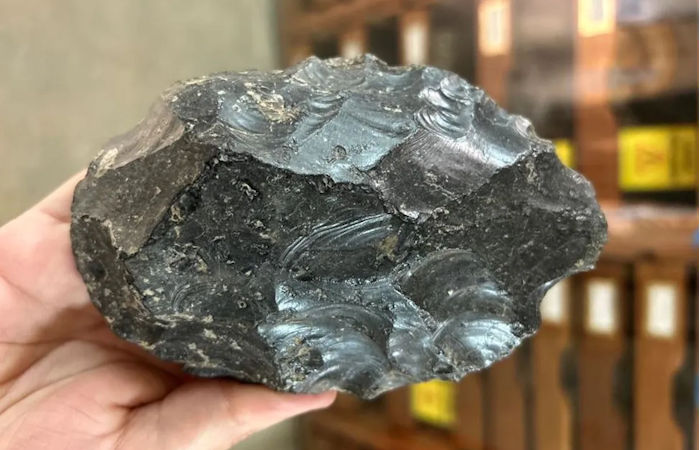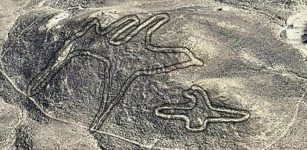1.2-Million-Year-Old Obsidian Axe Made By Unknown Human Species Discovered In Ethiopia
Jan Bartek - AncientPages.com - Scientists excavating at the Melka Kunture archaeological site in Ethiopia have discovered that early human species were resourceful and more intelligent than previously thought.
About 1.2 million years ago, an unknown human species in Ethiopia manufactured obsidian axes in a stone tool workshop. While working at the Melka Kunture site, scientists say they found evidence "hominins were doing much more than simply reacting to environmental changes; they were taking advantage of new opportunities, and developing new techniques and new skills."
This obsidian handaxe was made by an unknown hominid 1.2 million years ago. Credit: Margherita Mussi
Located 50 km south of Addis Ababa, Melka Kunture is a cluster of prehistoric sites of great interest to archaeologists. Here, scientists have found 1.2-million-year-old footprints left by adults and children. Melka Kunture offers a wealth of information shedding new light on the history of the early human species.
Yet, the fact early hominins were able to produce a hand axe made of obsidian was surprising to scientists. Scientists say this is a remarkable achievement!
Obsidian is a naturally occurring volcanic glass formed when lava extruded from a volcano cools rapidly with minimal crystal growth. It is an igneous rock.
"In ancient times, obsidian was used for cutting tools and weapons, like blades and arrowheads. Well-crafted obsidian blades can be as sharp as surgical steel scalpels. Today, obsidian is used as a gem or ornamental stone." 1
As reported by IFL Science, "this represents a staggeringly early example of obsidian shaping, and, according to the study authors, is the only handaxe factory ever dated to the Early Pleistocene.
“[Archaeological] sites described as ‘knapping workshops’ are only recorded in the second half of the Middle Pleistocene and only in Europe so far,” write the researchers. Located predominantly in France and the UK, the most notable Stone Age axe workshops were all associated with the creation of flint blades.
“Generally speaking, obsidian is extensively used only from the Middle Stone Age onwards,” write the study authors.
However, during the course of their excavations, the team came across an ancient layer of sediment containing a cache of 578 stone tools, all but three of which were sculpted from obsidian. “We show through statistical analysis that this was a focused activity, that very standardized handaxes were produced and that this was a stone-tool workshop,” they write.
Describing the axes, the researchers repeatedly marvel that “the morphological standardization is remarkable,” and while they don’t know which species of human crafted the tools, they say that whoever created them diligently applied “secondary retouches” and was highly “focused on the final regularization of the artifacts.”
While working with sharp materials such as obsidian usually requires protective gloves. Otherwise, one risks cutting the hands badly. Yet, early humans managed to produce extraordinary obsidian axes with no protective equipment at all.
In their study the research team referred to the unknown human species as creative thinkers capable of solving "technological problems such as effectively detaching and shaping large flakes of the unusually brittle and cutting volcanic glass.
"The standardized obsidian handaxes provide ample evidence of the repetitive use of fully mastered skills," the researchers write.
Written by Jan Bartek - AncientPages.com Staff Writer
Expand for references




















